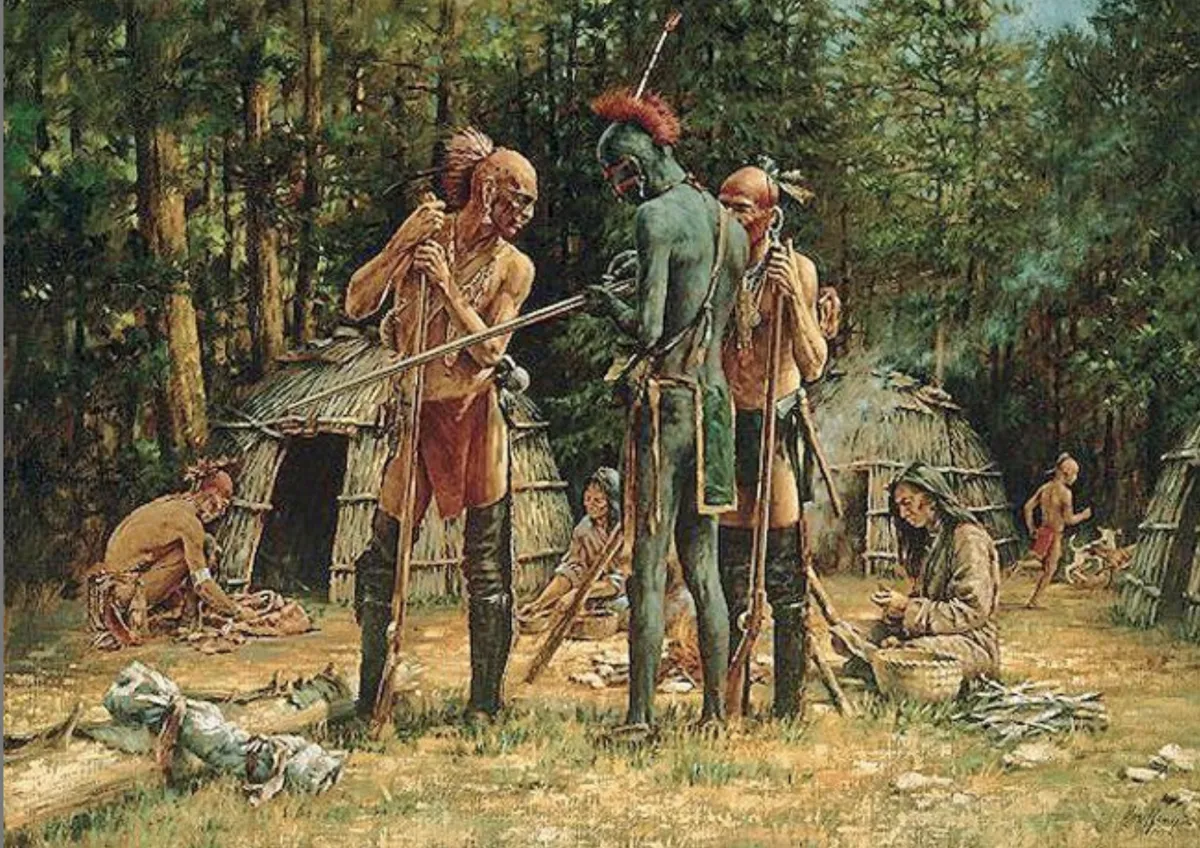
Stories of Our Past: Honoring Delaware Funeral Traditions
By Cherokee 411 Staff
Adapted from the original article by Anita Mathis, Librarian & Archives Manager
At the heart of the Delaware Tribe’s Cultural Education Center lies a powerful collection of documents, photos, and oral histories that preserve the living memory of the Lenape people. Thanks to the work of dedicated tribal historians like Anita Mathis, stories that once passed only from elder to youth now find a permanent home in the Tribe’s Archives.
One such story, recorded in 1966, stands out for its reverence and cultural richness. That year, tribal member Freddie Washington, then approximately 61 years old and living northeast of Copan, Oklahoma, sat for an interview that captured his memory of traditional Delaware funeral rites—a sacred ceremony that reveals how deeply connected the Lenape people are to both land and spirit.
A Collective Act of Honor and Ceremony
According to Washington, Delaware funeral practices were rooted in community responsibility. When a tribal member passed, a committee of three men and three women—none related to the deceased—was appointed to oversee all aspects of the burial and ceremony.
Each person had a defined role:
One man prepared the clothing,
Another arranged the time and place of the service,
A third painted the face of the deceased according to their clan.
The three women organized the ceremonial meal known as the Last Supper.
The deceased remained at home the night before burial, never left alone. A preacher stayed through the night, praying from midnight until morning. Just before dawn, the painting of the face took place in accordance with the individual’s clan identity—an intimate final act of belonging.
Returning to the Earth, Releasing the Spirit
At the cemetery, the casket was laid with the head to the east and the body facing west. The preacher stood at the head, speaking to the survivors, reminding them that their loved one was “going home” and that they too must one day be ready for that journey.
Survivors stood in a line on the south side of the grave, facing north. After prayer, they walked clockwise around the grave, shaking hands with the preacher—a gesture repeated by all in attendance.
Then came a sacred moment: a small notch was cut into the southeast corner of the casket—not the lid, but the side—so the spirit could be released. Possessions of the deceased were placed in the grave. The casket was then lowered, the marker set with its base over the head of the body, and the grave filled.
Four Days of Farewell
The ceremony continued with a symbolic meal. A representative of the deceased—chosen by the community—received three large bowls of food. This representative could eat during the Last Supper or take the food home, a gesture of honor and continuity.
After the meal, all left except the closest relative, who stayed at the gravesite. Each day, shortly after 4 p.m., they returned to light a small fire of four or five twigs at the head of the grave. This was done for four days, to help carry the spirit “far away” in the smoke and to purify the survivor’s body, mind, and spirit.
There was no music. No singing. Just stillness, tradition, and a deep spiritual sense of passage.
Preserving These Stories for the Future
Today, the Delaware Cultural Education Center invites tribal members to explore these sacred histories in person. The Archives, Library, and Lenape Reserve Gift Shop hold many more photos, interviews, and artifacts that tell the story of the Delaware people—from the distant past to the present day.
We encourage you to visit, learn, and reconnect.
Wanishi.
